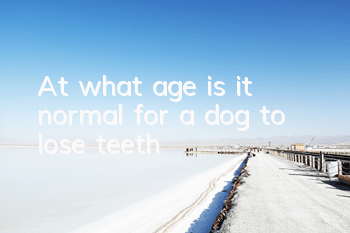No matter which type of poodle is currently popular, they are actually the same dog breed. The only difference lies in the size of the dog. There is no difference in the evaluation standards of the dog breed itself. Generally speaking, the standard poodle is 38.1 cm or above in height and weighs 9 kg ~ 11.5 kg; the mini poodle is 25.4 cm ~ 38.1 cm tall and weighs 5 kg ~ 8 kg; the toy poodle is 25.4 cm tall or below, weight 3kg~4kg.
Posture characteristics
Its posture is very proud, full of confidence, agility and intelligence, and the Poodle has extraordinary temperament and unique dignity. The Poodle is a very active, alert and elegant dog breed, with good body proportions and vigorous movements, showing a confident posture. They are easy to approach people, easy to train, and are very loyal dogs. Its smaller size allows it to get along well with children and also makes it more attractive to people.
Morphological characteristics
Height
Male Toy Poodles are 9.5-11.0 inches (24.0-28.0 cm) high at the withers, and female Toy Poodles are 9.5-11.0 inches (24.0-28.0 cm) high at the withers.
Coat color
The colors of Toy Poodles (Teddy) are very changeable, including white, gray, oyster brown, apricot, black, etc. There will also be shades of changes in different parts of the body, such as the hair on the ears. The darker the color, the lighter the color on the chest. In the United States, many breeders use poodles of different colors to breed flowered poodles of different colors. Among them, the most expensive one is gray teddy, and the price of VIP teddy is getting more and more expensive now. This is the result of the influence of market supply and demand. The lowest prices are black Teddy and white Teddy.
Head
The head is prominent, linear and proportional to the body. Length must be slightly greater than 2/5 of shoulder height. Not too heavy or bulky, but not too delicate either. There needs to be sharp edges under the skin.
Skull: distinctly shaped; width less than half the head length (the central axis forms an axial plane angle of approximately 16 to 18 degrees). Viewed from above, the entire skull is oval-shaped longitudinally, with a slightly convex outline. The vertical axis diverges slightly.
The eyes are arched above; moderately pronounced and covered with long hair.
There are wrinkles on the forehead, the width between the eyes is very wide, and it becomes narrower towards the occipital bone, which is very obvious (the mini type will be less obvious).
Stop: As in medium-sized dogs, barely noticeable.
Nose: distinct and well developed, occipital bone vertical; nostrils open. The nose color of black, white and gray poodles is black; the nose color of tan poodles is brown; the nose color of apricot poodles is brown throughout the dun range, and may also be black. There is no best color, allAcceptable but avoid possible fading.
Muzzle: The upper outline is straight; the length of the muzzle is approximately 9/10 of the length of the skull.
The two branches of the lower jaw extend almost parallel. The lower jaw, rather than the edge of the upper lip, outlines the lower contour of the muzzle.
Lips: Slightly developed, fairly tight, of medium thickness, with the upper lip above and not exceeding the lower lip. Black, white, and gray dogs have black lips; apricot dogs have lips that range in color from the entire brown range to black, and there is no optimal color and all are acceptable. The corners of the mouth must be distinct.
Jaw/Teeth: Normal position, strong teeth. No points will be penalized for the absence of a first or second molar in the upper jaw or a second or third molar in the lower jaw during judging or breeding selection.
Facial: Not significant. The shape is outlined by the cheek bones. The outer eye sockets are well defined but only slightly sunken. The masticatory muscles and anatomical base of the cheek are slightly developed; the cheekbones are slightly arched.
Eyes: With an eager expression, set at the level of the stop and slightly slanted.
The contour of the eyelids gives the eyes an almond shape. The eyes of black, white and gray Poodles and apricot Poodles are black or dark brown; in brown Poodles they may be dark amber.
Ears: very long, drooping along both sides of the cheeks, located on the extension line starting from the upper end of the nose and passing below the outer corners of the eyes, flat, widening at the back of the ear base, rounded at the tip, and covered with very long curly hair. Poodles whose ears do not reach the corners of the mouth are not classified as "excellent".
Neck
Strong, slightly arched at the back, medium length, and well proportioned. Enough to hold your head high with dignity. No dewlap. Oval where neck meets; length shorter than head.
Body: The overall torso appearance of the Poodle is well proportioned. The length of the torso is usually greater than the height at the shoulders.
Shoulders: Moderately developed back.
Topline short and harmonious. Neither arching nor slumping. The height from the floor to the shoulders is almost the same as the height from the floor to the hips.
Loin: Firm and muscular.
Hocks; round but not sloping.
Chest: Drop to elbow level, width equal to 2/3 of depth (from spine to sternum). The circumference of the chest, measured from below the shoulders, should be at least 10 cm greater than the height of the shoulders.
Ribs: The rib cage is oval and wide at the back.
Forechest: normal size; the end of the sternum must be slightly protruding and located at a fairly high position to facilitate the noble lifting of the head. Abdomen: Tucked but not too much.
Forequarters
The front legs are very straight, parallel to each other, elegant, muscular and well boned. The height from the elbow to the ground is 5/9 of the height from the shoulders to the ground. Shoulders: Sloping, muscular. Shoulder blades and upper limbs form 90&de.g. to 110° angle.
Upper arm: The length of the upper limb corresponds to the length of the shoulder blade. Pasterns: Strong, but not huge, appearing almost straight in outline.
Feet: Quite small, thick, and oval.
The toes are clearly arched, strong, compact, webbed, and tightly connected to the hard and thick pads. Black and gray, the toenails of black dogs are black, the toenails of brown dogs are brown, and the toenails of white dogs may be the entire range of horn colors from dark to black, which must be consistent with their coat color. White toenails remain a disqualification. The toenail color of apricot dogs ranges from dark brown to black. There is no best color and all colors in between are acceptable.
Hindquarters: Viewed from the back, the hind legs are straight, parallel to each other, and the muscles are well developed and very obvious. The hock joints are sharply angled.
Lumbar: The angle formed by the femur and the tibia-tarsal angle must be very pronounced to avoid tilting the hips in some situations where the legs are upright.
Thighs: Muscular and strong. Hock: vertical. Poodles should not be born with dewclaws on their hind legs.
tail
Located quite high at waist level. The tail is cut off 1/3 of the way from the body, or half its natural length in the case of Curly-coated Poodles. But a long, upturned tail is not a disqualification. Corduroy Poodles may retain the entire length of their tail. The tail is tilted and raised during movement.








